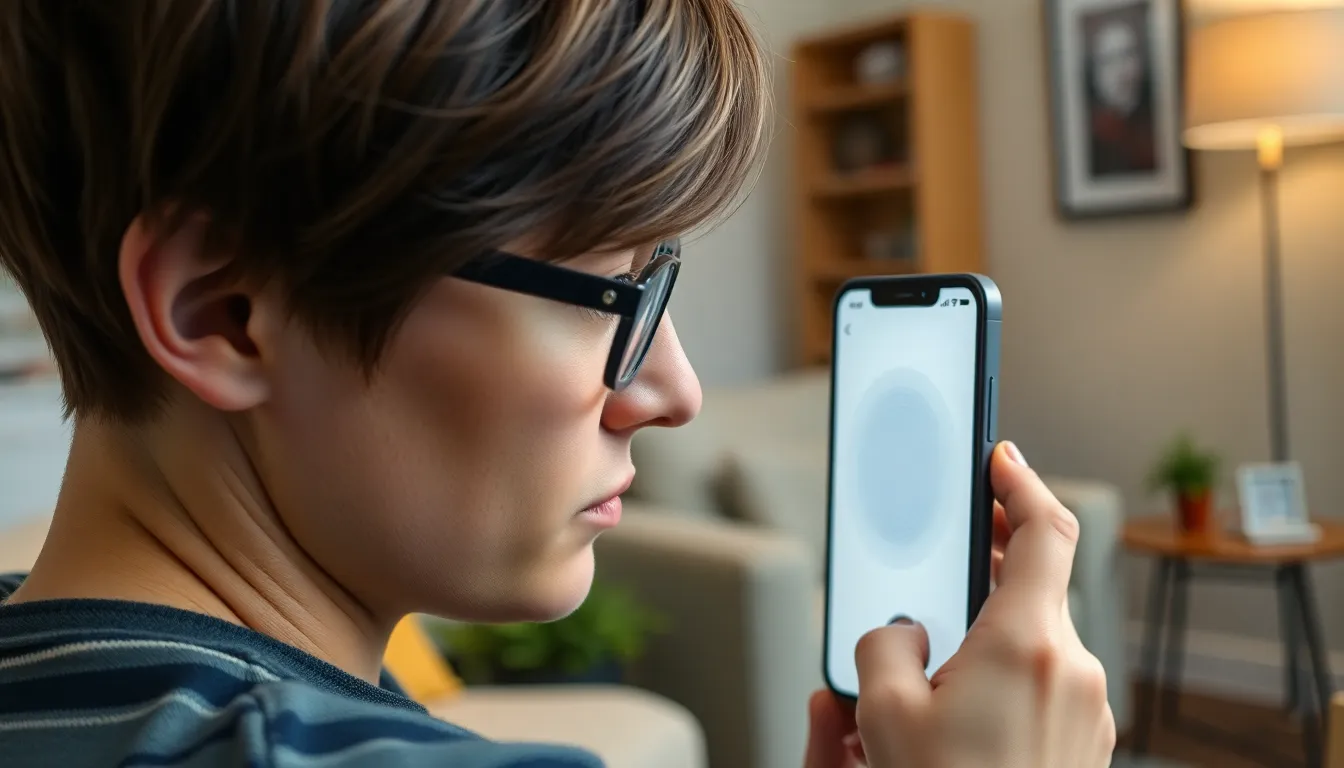Table of Contents
ToggleIn a world where unlocking your phone with just a glance feels like magic, it’s a bummer when Face ID decides to play hard to get. Whether it’s because of a new hairstyle, a pandemic mask, or that unintentional face-squishing nap, sometimes your iPhone just doesn’t recognize you anymore. But fear not! Resetting Face ID is easier than finding a good avocado in a grocery store.
Understanding Face Recognition on iPhone
Face recognition on the iPhone, known as Face ID, provides a secure method for unlocking devices. This technology identifies users through their facial features, adapting to changes over time.
What Is Face Recognition?
Face recognition is a biometric authentication method. It analyzes distinct facial characteristics to verify a user’s identity. This system uses a combination of hardware and software to create a detailed map of a person’s face. iPhones utilize TrueDepth technology, ensuring high accuracy. This feature allows for seamless unlocking and supports transactions securely.
How Does It Work?
Face ID relies on advanced algorithms and technology. First, the front-facing camera captures an image of the user’s face. Next, infrared sensors project thousands of invisible dots, measuring depth and contours. The device then creates a mathematical representation of the face, stored securely on the iPhone. For security, this representation does not save an image of the person’s face, protecting user privacy.
Reasons to Reset Face Recognition

Resetting Face ID can address several common problems users experience with this feature. Frequent issues often stem from changes in appearance, such as a new hairstyle, glasses, or weight fluctuations. These alterations may hinder accurate recognition, causing frustration. Additionally, wearing a mask can impede Face ID functionality, leading to repeated failed unlock attempts.
Common Issues with Face Recognition
Common problems arise when Face ID is unable to match a user’s face to stored data. Lighting conditions can affect performance, especially in low or harsh lighting. Changes in physical attributes, such as adding or removing facial hair, can disrupt the recognition process as well. Users may notice a decrease in accuracy if their device hasn’t recently updated software. A reboot of the device sometimes resolves temporary glitches but may not address deeper issues.
Privacy Concerns
Privacy issues often prompt users to reconsider their Face ID settings. Some individuals worry about unauthorized access to personal data via facial recognition technology. Cybersecurity threats heighten these concerns, especially concerning potential data breaches. Resetting Face ID not only enhances security but allows users to update their biometric data for more accurate authentication. Enabling this feature grants users peace of mind, as data remains stored locally on their device, adhering to privacy protections.
Steps to Reset Face Recognition on iPhone
Resetting Face ID on an iPhone involves a few straightforward steps. Follow these instructions to ensure a successful reset.
Accessing Settings
Start by opening the Settings app on the iPhone. Scroll down and tap on Face ID & Passcode. Enter the device passcode if prompted. Once in the Face ID settings, you can view information related to your current Face ID setup. Accessing this menu is the first crucial step toward resetting Face ID.
Deleting Existing Face Data
Within the Face ID settings, select the option to reset Face ID. This will delete all existing face data stored on the device. Confirm the deletion when prompted; this action permanently removes the previous facial recognition data. Deleting existing face data is essential for setting up a fresh and more accurate recognition profile.
Setting Up Face Recognition Again
After deleting the existing data, tap on Set Up Face ID. Position the face inside the frame displayed on the screen and follow the on-screen instructions to complete the setup. Move the head in a circle when prompted to capture different angles. Completing this process enhances Face ID’s ability to accurately recognize the face even in varying conditions.
Tips for Successful Face Recognition
Optimizing Face ID can enhance its accuracy and speed. Consider various factors that affect recognition success, such as lighting and facial expressions.
Lighting Conditions
Proper lighting significantly impacts Face ID’s effectiveness. Bright, even lighting contributes to better recognition, while dim or harsh lighting can hinder accuracy. Avoid backlighting, which creates shadows and obscures facial features. Ideally, use natural light for optimal performance. Users should position themselves so that their face is well-lit from the front, ensuring TrueDepth technology captures detailed images. Adjusting the environment accordingly can reduce frustration during authentication.
Facial Expressions
Maintaining consistent facial expressions enhances Face ID reliability. Joyful or surprised faces may confuse the recognition process. Subtle changes in expression can also create recognition issues. Users should present a neutral face when setting up and using Face ID. Avoid overly exaggerated expressions, which might affect the facial map stored on the device. Consistency helps the system recognize users accurately across different conditions, ultimately streamlining the unlocking experience.
Resetting Face ID on an iPhone can significantly improve its performance and accuracy. By following the simple steps outlined, users can ensure their Face ID is up-to-date and responsive to their current appearance. This not only enhances security but also streamlines the unlocking process and transaction approvals.
With a few adjustments to lighting and facial expression during the setup, users can further optimize Face ID’s functionality. Embracing these practices allows for a seamless experience, making the most of the advanced technology at their fingertips. Users can enjoy the convenience of Face ID while maintaining control over their privacy and security.





